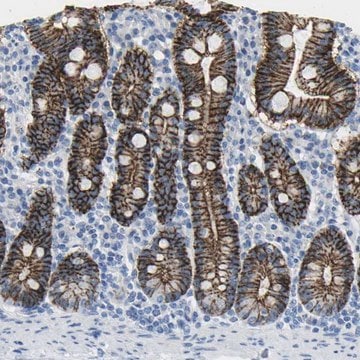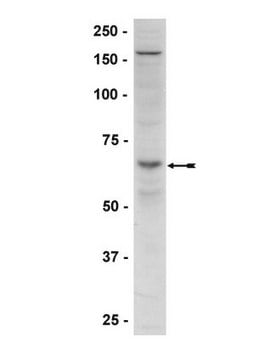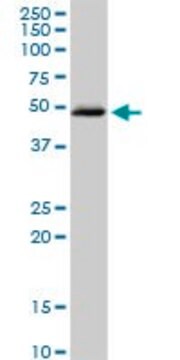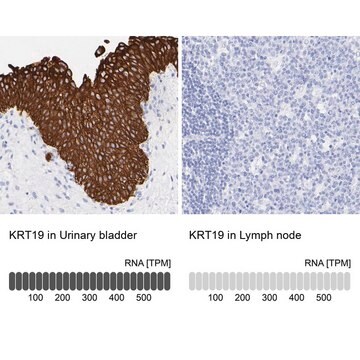ABS981
Anti-phospho-AMPK alpha-1 Antibody, (Thr479)
from rabbit, purified by affinity chromatography
Sinônimo(s):
5′-AMP-activated protein kinase catalytic subunit alpha-1, Thr479-phosphorylated, ACACA kinase, Thr479-phosphorylated, Acetyl-CoA carboxylase kinase, Thr479-phosphorylated, AMPK subunit alpha-1, Thr479-phosphorylated, AMPKa1, Thr479-phosphorylated, HMGCR
About This Item
Produtos recomendados
fonte biológica
rabbit
Nível de qualidade
forma do anticorpo
affinity isolated antibody
tipo de produto de anticorpo
primary antibodies
clone
polyclonal
purificado por
affinity chromatography
reatividade de espécies
human
reatividade da espécie (prevista por homologia)
bovine (based on 100% sequence homology), rat (based on 100% sequence homology), porcine (based on 100% sequence homology), horse (based on 100% sequence homology), mouse (based on 100% sequence homology)
técnica(s)
dot blot: suitable
western blot: suitable
nº de adesão GenBank
nº de adesão UniProt
Condições de expedição
ambient
modificação pós-traducional do alvo
phosphorylation (pThr479)
Informações sobre genes
human ... PRKAA1(5562)
Descrição geral
Especificidade
Imunogênio
Aplicação
Signaling
Western Blotting Analysis: A 1:1000 dilution from a representative lot detected GSK3beta-catalyzed phosphorylation of E. coli expressed, catalytically inactive AMPK alpha-1 recombinant protein (Courtesy of Bruce Kemp, Ph.D., St. Vincent′s Institute of Medical Research in Melbourne).
Qualidade
Dot Blot Analysis: A 1:1,000 dilution of this antibody detected 20-0.156 ng of immunogen peptide, but not the corresponding non-phosphorylated peptide.
Descrição-alvo
forma física
Armazenamento e estabilidade
Outras notas
Informações legais
Exoneração de responsabilidade
Não está encontrando o produto certo?
Experimente o nosso Ferramenta de seleção de produtos.
Código de classe de armazenamento
12 - Non Combustible Liquids
Classe de risco de água (WGK)
WGK 1
Ponto de fulgor (°F)
Not applicable
Ponto de fulgor (°C)
Not applicable
Certificados de análise (COA)
Busque Certificados de análise (COA) digitando o Número do Lote do produto. Os números de lote e remessa podem ser encontrados no rótulo de um produto após a palavra “Lot” ou “Batch”.
Já possui este produto?
Encontre a documentação dos produtos que você adquiriu recentemente na biblioteca de documentos.
Nossa equipe de cientistas tem experiência em todas as áreas de pesquisa, incluindo Life Sciences, ciência de materiais, síntese química, cromatografia, química analítica e muitas outras.
Entre em contato com a assistência técnica








